In recent years, manufacturing has changed dramatically. Technological advancements have provided space for new ways of production. Among these discoveries is Binder Jet 3D Printing, which has revolutionized metal parts production. This article explains the basics of binder jetting, its unique processes and benefits, and how it affects different sectors. When readers realize that this technology can enhance production efficiency, cut down costs, and allow more design options, they will understand why it is said that no other method beats binder jet 3D printing when it comes to modern manufacturing. With us, you will learn about this technique that has the potential to change everything and its impact on the future of metal part fabrication.
What is Binder Jet 3D Printing?
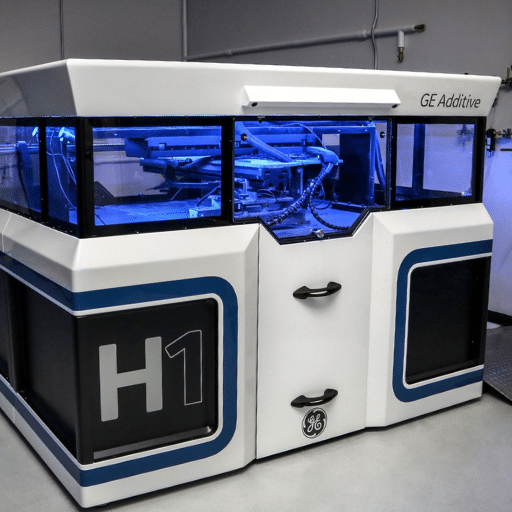
Image source: https://www.fabbaloo.com/
Binder Jet 3D Printing is an additive manufacturing process where layers of powder materials – metals, ceramics, or polymers are joined together using a binder solution. Instead of melting or extruding substances like traditional methods, the printer spreads a thin layer of powder and selectively applies liquid binders to stick particles onto it precisely. The next step involves adding more layers until the whole object is formed and printed. The rest of the parts may need curing or sintering for better mechanical properties development. It allows for making complex geometries quickly, which cannot be produced by any other means at the present time; it reduces material wastage significantly, thus making faster production possible and becoming a desirable option across different industries where things are produced in large numbers frequently.
Understanding the 3D Printing Process
3D printing, especially in binder jetting, is a multi-step process that creates finished parts. First, a thin layer of powdered material is spread across the build platform. Next, a print head moves over the layer and deposits a liquid binder onto the powder to bind it together in certain areas. This construction takes place layer by layer, each new one on top of the last until the whole object has been formed. After printing comes post-processing steps, which can involve curing or sintering for increased strength and durability. This process simplifies part creation while allowing for quick prototyping and production with intricate designs — all while significantly reducing wasted materials, thus making it an eco-friendly choice among manufacturers seeking to bring innovation into their fabrication methods.
How does Binder Jetting 3D work?
I do binder jetting in 3D printing by spreading powder material across a build platform and then applying a liquid binder precisely to fuse some specific regions of that powder. To begin with, I spread out a thin layer of chosen powdered materials on top of each other at my disposal area. The particles are bonded into their first layers by depositing them through print heads where they have patterns already set up using binders to stick together when they fall down toward building platforms. This happens repeatedly until we achieve complete objects after so many layers have been laid down one after another throughout its height. Meanwhile, after finishing this stage, sometimes there may be a need for further processing, such as curing or sintering, which will improve mechanical properties, thereby producing intense and complex final products. Its efficiency stands out among others because it enables one to create complicated designs quickly, saving lots of resources for other activities involved in 3D printing.
Critical Characteristics of Binder in 3D Printing
- Material Adaptability: The binder utilized in 3D printing can work with a wide range of materials, such as metals, ceramics, and polymers. This adaptability allows for the manufacturing of parts with different properties and uses that serve industries like aerospace, automotive, and healthcare, among others.
- Accuracy and Elaboration: Binder jetting technology can create objects with very detailed features. It is possible to realize complicated designs by applying binding agents precisely to areas where they are needed, which may not be achieved through conventional production methods due to their complexity.
- Waste Reduction: Binder Jetting’s outstanding merit lies in its economical employment of materials. Since only relevant portions of powders get fused together, there is much less scrap compared to subtractive techniques, thus making this approach more environmentally friendly.
What are the Advantages of Binder Jetting 3D Technology?
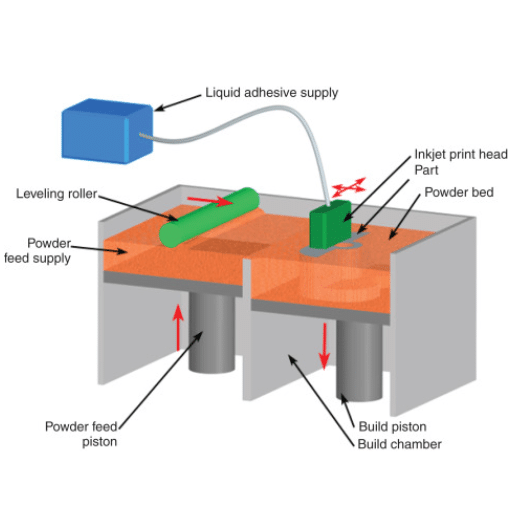
There are many reasons why people prefer using binder jetting 3D tech in most cases. First, it saves money because usually cheaper substances are used here than those required by other methods while allowing the fabrication of more extensive components within shorter periods. Additionally, complex shapes can be made without extensive tooling, cutting down on lead times significantly, besides being able to produce multiple pieces simultaneously, which increases efficiency at manufacturing plants. Last but not least, important, accuracy levels are pretty high during the creation of functional prototypes, so designers can test them before final production based on good accuracy obtained through this method when still at the design stage.
Benefits of Additive Manufacturing
Additive manufacturing has many benefits that improve production efficiency and the capacity for design. This speeds up the product development cycle because it enables quick prototyping, which involves building and testing prototypes quickly. Another advantage is that it supports customization, which means parts can be made to order without expensive retooling to meet specific user needs. Furthermore, it is material efficient by using only what’s necessary, reducing waste and costs associated with leftovers. The technique allows for complex shapes and lightweight structures that are difficult or impossible with traditional methods of manufacture. Finally, AM makes supply chains more flexible through localized production, thus reducing extensive inventory and transport costs.
Cost-Effectiveness in Metal 3D Printing
From what I’ve seen so far, metal 3D printing can save money throughout all production phases for many applications – though not always immediately apparent when just looking at initial equipment expenditure compared to conventional techniques’ setup price tag alone. Higher costs might be incurred initially due to purchasing machines and the required materials. Still, these are counterbalanced by substantial savings in tooling and lead times involved later during the manufacturing stages while considering overall life cycle costing (LCC). I believe this is achieved by cutting down wastage; projects can remain within budget yet still produce top-quality outputs if only the correct inputs are used up each time they’re needed. Besides being able to make any shape desired easily without having lots sitting around waiting forever or shipping vast distances back and forth between warehouses, another thing I love about the metal additive manufacturing process is its ability to create intricate geometries whenever required, thus eliminating the need store much stock thereby reducing transportation expenses; making things much simpler logistically mainly where space may be limited such as small business setups – also opens up opportunities previously considered prohibitively expensive untenable even for big organizations working under tight cash flow conditions.
Mass Production Capabilities with Binder Jet
The binder jetting technology is ideal for mass production because of its ability to quickly make parts without complex tooling. The process manufactures things by combining binding agents with powdered materials, resulting in intricate pieces that need minimal finishing. Scalability is the other name for binder jetting, as it can produce large numbers of items simultaneously while ensuring uniformity across them. This method also saves time more than traditional ways since it significantly reduces lead times. Additionally, this technique can use different materials like metals and ceramics, thus making it applicable to various industries seeking streamlined production amid increased demand. Businesses should, therefore, adopt binder jet technology to realize reduced costs, higher rates of output, and better design capabilities that come along with mass manufacturing.
What Materials Can Be Used in Binder Jetting?
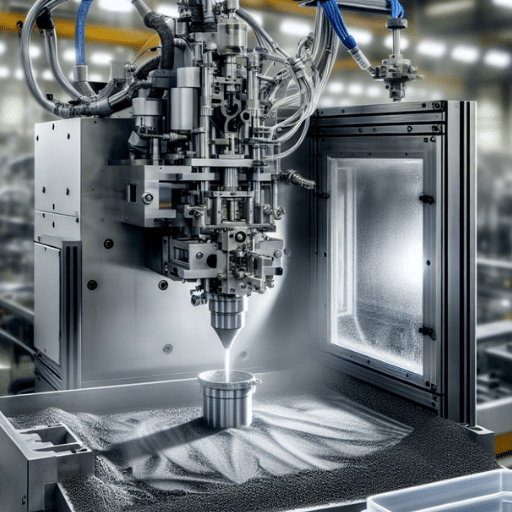
Binder jetting is an adaptable additive manufacturing procedure that works well with many types of materials, such as:
- Metals: Stainless steel, bronze, or even tool steel, among others, may be used where high strength and durability are required.
- Ceramics: Different powders made from ceramics can be utilized for industries with components that should possess heat resistance properties and good wear resistance qualities.
- Sand: Sand is used when molds need to be built up or cores must be developed during construction work or foundries.
- Composites: A few systems dealing with binder jets can handle composites, which are materials engineered by combining several substances to achieve improved performance in some areas while maintaining desired properties elsewhere.
Materials selection enables customization regarding design and functionality, allowing manufacturers to effectively meet specific project needs.
Exploring Metal Powder Options
While looking into metal powders for binder jetting, I discovered some standout choices based on extensive reviews by industry leaders. Stainless steel still ranks as one of the best options due to its strength and corrosion resistance; this makes it perfect for durable, functional parts. Another exciting finding was titanium powder, which provides lightweight yet strong properties that can be particularly useful in aerospace applications. Finally, cobalt chrome powder boasts exceptional wear resistance and is designed for components operating under harsh conditions with high stresses. Using these metal powders improves mechanical and opens up new possibilities in terms of functionality design innovation.
Using Ceramics in Binder Jet 3D Printing
Ceramics have essential properties in 3D printing using binder jetting technology, which can withstand high temperatures and resist wear. This is according to reliable sources in the industry who also say that ceramics can be used to make complex shapes that are difficult or impossible with traditional methods of manufacture. A green part is formed by binding ceramic powders together with liquid binders during this process; later, the mechanical strength of such parts is increased by sintering them. Research findings show that porosity and density can be controlled very accurately using this method, making it suitable for aerospace, dental, and medical sectors, where different levels of these features are needed along one component. This adaptability reflects the increasing use of additive manufacturing systems involving ceramics, allowing for new approaches toward part optimization based on improved performance characteristics.
How Does Binder Jet 3D Printing Compare to Other 3D Printing Technologies?
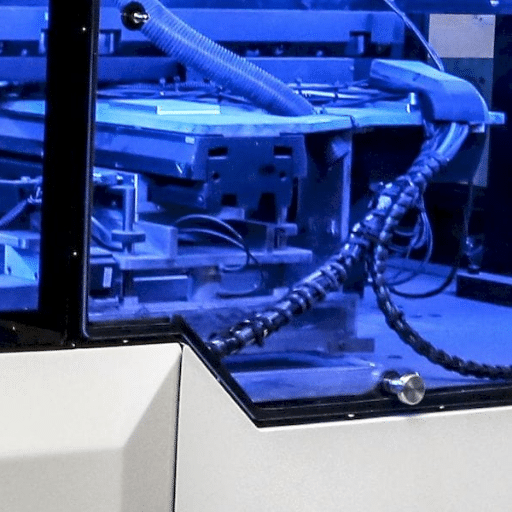
The uniqueness in methodology and material capabilities sets binder jet 3D printing apart from other additive manufacturing techniques. For instance, unlike Fused Deposition Modelling (FDM) where thermoplastic filaments are extruded or Stereolithography(SLA) which uses lasers to cure resins, binder jetting solidifies powder materials through a liquid binder thereby enabling wider variety including metals even ceramics. Another advantage is that production time for this process is faster besides having no size limits like some other methods do; moreover, complexity within component design possibilities is more significant due to creation capacity regarding inner details such as porousness levels specific applications may require. However, post-processing steps like sintering usually need to be conducted to achieve ultimate strengths, although it can take longer time during production. In general, what makes binder jet 3D printing unique among additive manufacturing technologies lies primarily in its ability to work flexibly while maintaining the efficiency necessary for realizing current goals within the AM field.
Differences Between Binder Jet and Metal Injection Molding
Binder jetting and metal injection molding (MIM) are two ways of making metal parts, but they have different processes and uses. In binder jetting, fine metal powders are stacked and held together with a liquid binder to create components that are sintered to achieve final density and strength. It allows more flexibility in design and faster production of complex geometries without complicated tooling.
Metal injection molding, on the other hand, mixes metal powders with a polymer binder to form a feedstock that is injected into molds under high pressure. Generally, MIM provides higher density and strength at the beginning compared to binder jetting, thereby being more suitable for mechanically superior-demanding components produced through high-volume manufacturing.
Additionally, while binder jetting efficiently works well with many materials, MIM usually uses only certain types of metal powders. Also, in terms of setup costs at the first stage, where specialized moulds are needed, more investment is required for MIM than what could be expected from binder jetting, which can be adapted easily and thus becomes cheaper during short runs or when fast prototyping is needed, for example.
Advantages Of Traditional 3D Printing Methods
Binder jetting has many advantages compared to other 3D printing methods, such as Fused Deposition Modeling (FDM) and Stereolithography (SLA). One advantage is that binder jetting can use many materials, including metal powders and ceramics, with better mechanical properties. I also know that it saves time in making things layer by layer and allows for complex designs that are difficult to create using traditional 3D printers.
Unlike FDM or SLA, where surface finishing and support removal may take forever, binder jetting needs less post-processing. Time is saved when one creates objects that are fully dense from the build chamber, particularly those with irregular forms like aerospace parts or automotive components. In summary, these merits establish binder jetting as a valid option for rapid prototyping through low-medium volume production.
Integration with Desktop Metal Solutions
The way Desktop Metal has incorporated this technology into its systems simplifies additive manufacturing by increasing speed without compromising quality output. They designed the Studio System for offices thereby enabling easy production of minimal setup metal items; hence reducing entry barriers in the 3D printing world for businesses. Moreover, The Production System from Desktop Metal makes it possible to achieve precise details when mass-producing complex-shaped metallic objects through high-speed binder jetting. These two alternatives together allow more creativity in design, leading to shorter lead times, especially in industries concerned with performance and accuracy, like the aerospace or automotive field. Manufacturers who adopt such innovations can significantly enhance their production process efficiency while meeting increased demand for solid yet light products needed in various sectors of the economy.
What Are the Applications of Binder Jet 3D Printing?
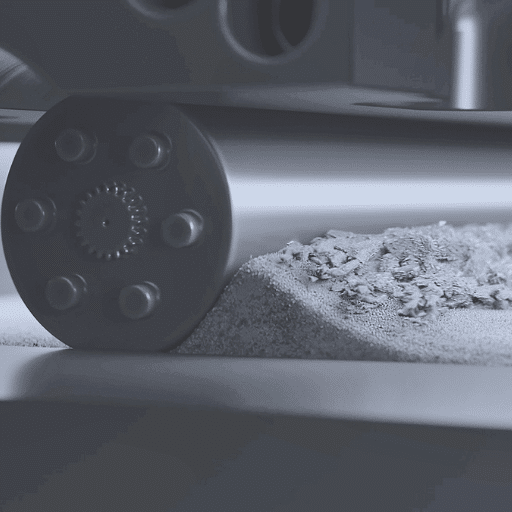
Because binder jet 3D printing can create complex geometries and inexpensive manufacturing methods, it is widely used in many sectors. These are the main applications:
- Prototyping: In the aerospace and automotive industries, it is mainly used for the fast production of functional prototypes for testing and design iteration.
- Tooling: Making custom tools or dies that help save time during production while simultaneously increasing efficiency levels.
- Medical: Creating implants or prosthetics explicitly designed for each patient to improve fitment and functionality.
- Production Parts: When precise performance is required, such as in aerospace, automotive, and consumer goods, among others, this technology allows mass producing end-use parts.
- Art and Design: It enables people to express themselves creatively through intricate designs, which may not be possible using traditional manufacturing methods alone.
These uses demonstrate how versatile binder jet 3D printing can be in meeting different needs within the modern industry.
Industry Uses of 3D Printed Metal Parts
3D-printed metal parts have revolutionized many industries by allowing greater design freedom, faster prototype development timeframes, and cheaper production costs, among other benefits. This technology is being utilized widely because of the following reasons:
- Aviation sector: Lightweight structures can be achieved through the creation of complex geometries using metals printed in three dimensions, leading to better fuel consumption rates and enhanced overall performance. Examples include brackets, fixtures, or even turbine components, which are all manufactured through additive manufacturing processes like this one.
- Automotive industry: Customized tooling is easily made alongside rapid prototyping capabilities, plus the realization of highly sophisticated parts directly impacting vehicle functionalities. Hence, higher performance levels, such as exhaust systems, among other things, also fall under these categories.
- Medical field: Patient-specific surgical instruments and implants can be designed, increasing the chances of successful operations and, thus, faster recovery periods. Good illustrations include personalized titanium anatomical plates.
These are just a few of the numerous applications for which 3D-printed metal parts are used today. They have ushered in new opportunities for creativity and efficiency in various sectors as businesses seek to stay ahead of their competitors.
Innovative Uses in Additive Manufacturing
Additive manufacturing has never stopped breaking the limits of various fields. While looking into present-day usage, I realized that businesses have been using it not only for prototypes but also for end-use parts they didn’t think were possible before. In fashion, designers are using 3D printers to create complex patterns and personalized accessories that express their individuality better than any other method could allow them to. Similarly, construction companies now use large-scale 3D printing, which can produce whole buildings, thereby reducing waste materials and time spent on site. Another area where there have been exciting developments is food where chefs can now employ edible 3d printers to create tailor made dining experiences according each person’s taste preference.These new applications are fascinating because they show how additive manufacturing can transform traditional or emerging markets.
Future Trends in Printing Technology
The printing industry is expected to see a future characterized by significant advancements leading to its further revolutionization. The first is the anticipated integration of artificial intelligence into the different stages of additive manufacturing, which should result in more brilliant production lines through enhanced efficiency and greater precision. In this regard AI driven systems would facilitate continuous monitoring and adjustment thus leading to higher quality standards while minimizing material wastage. Secondly, bio-printing may take significant steps forward; this involves creating viable living tissues and organs artificially – such an approach could potentially revolutionize medicine by solving organ shortages and making treatments more personalized. Lastly, sustainability within printing shall become increasingly popular, mainly focusing on eco-friendly materials and processes. Innovations like recycling old plastics into feedstock for 3D printing would contribute towards sustainable manufacturing practices, aligning themselves with global efforts to reduce environmental degradation. These directions anticipate an eventful green era for print technology. Even though it may sound strange, we can expect much more from our printers soon.
How Can 3D Printing Help in Production?
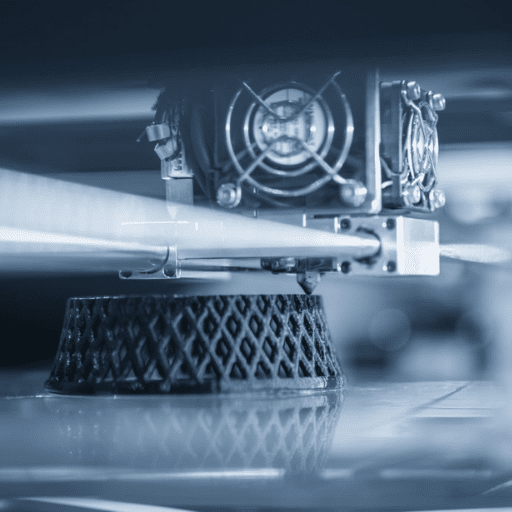
Greater design flexibility, shorter lead times, and reduced material wastage are among the many benefits of 3D printing in production processes. Businesses can develop new products that meet the needs of their consumers best by creating shapes they couldn’t make before using traditional methods. Furthermore, this saves them from having to keep large amounts of stock because items can be printed whenever required “On-demand,” which also aids in reacting quickly when demand changes occur. Another thing is that the speed at which prototypes can be manufactured through this method allows companies not only to test them but also improve on designs more frequently so that there may be shorter periods between when a product hits shelves after development begins, thereby leading us into a cost-effective environment within the factory.
Efficiency in the Production of Metal Parts
Several vital advantages highlight the efficiency of 3D printing for metal parts production. First, it gives room for lightweight designs with intricate features that are still strong enough to perform well – thus enhancing overall functionality should such components form part of an assembly or system. In addition to this, unlike subtractive methods, parts are built layer by layer in additive manufacturing, reducing waste significantly while potentially cutting down costs. Also, the prototyping speed enabled by these machines is another crucial point considering how long manufacturers would wait during design iterations and testing performances. Still, now everything can be done quickly under one roof. Such agility along the production line accelerates the realization process from the concept stage to the final product, making customization possible according to specific customer requirements. All these aspects make metal three-dimensional printings a highly effective response to current challenges in modern manufacturing circles.
Reducing Waste in the Manufacturing Process
Based on my experience, it is essential to reduce waste during the manufacturing process to achieve sustainability and efficiency. For instance, additive manufacturing methods such as 3D printing can ensure accurate consumption of materials since they construct objects layer by layer, thus minimizing excess material. Additionally, lean manufacturing techniques combined with continuous improvement methodologies help identify non-value-added activities within production flows, thereby creating value by eliminating waste steps. Besides that, another important thing is the integration of just-in-time inventory systems because they reduce overproduction and ensure that materials are only used when needed. Beyond cutting down on garbage these approaches also have potential benefits like huge savings on costs and smaller carbon footprints for manufacturing operations in general.
Enhancing Design Flexibility with 3D Printed Parts
Design flexibility within 3D printing for manufacturing is significantly increased, where complex geometries and intricate designs can be realized that cannot be achieved using traditional manufacturing methods. Creating lightweight structures with internal lattices that optimize strength while minimizing the utilization of materials becomes possible, among other things. This fosters innovation by allowing designers to experiment with new shapes and functionalities without being limited by conventional machining or production processes; this also enables them to cut down on weight, save money during transportation, etcetera, etc. Additionally, multi-part components can be printed as one single piece, therefore reducing the need for assembly and not only simplifying the process but improving overall performance too – adaptability exhibited by these printers supports rapid design iteration, making changes more straightforward to implement and tailoring products according to customer needs, hence bringing together creativity with practicality in the manufacturing sector.
Frequently Asked Questions (FAQs)
Q: What is binder jet 3D printing?
A: Binder jet 3D printing is an additive manufacturing process that involves using a 3D printer to deposit a liquid binder onto layers of powdered material, such as metal or ceramic, to create parts. This method allows for the production of complex geometries with high precision.
Q: How does a binder jetting system work?
A: A binder jetting system spreads a layer of powdered material across the build platform and then selectively applies a liquid binder using a print head. The binder acts as an adhesive, binding the powder particles together. This process is repeated layer by layer until the part is fully formed.
Q: What materials can be used in binder jet 3D printing?
A: Binder jet 3D printing can utilize various powdered materials, including metals, ceramics, and sand. The choice of material affects the final properties of the binder jet parts produced.
Q: What are the advantages of using a binder jet 3D printer?
A: Advantages of using a binder jet 3D printer include the ability to produce complex geometries, lower material waste compared to traditional manufacturing, and the potential for high-speed part production. It also allows for the use of multiple materials within a single print.
Q: Can the binder jetting process be used for large-scale production?
A: Yes, the binder jetting process is suitable for large-scale production, especially for industries that require the mass production of metal parts, such as aerospace and automotive. Its speed and efficiency make it a viable option for high-volume applications.
Q: What are some typical applications of binder jet 3D printing?
A: Binder jet 3D printing has common applications in manufacturing metal parts for aerospace components, automotive parts, industrial machinery, and even custom medical implants. The technology is also used to create sand molds for casting processes.
Q: How does the surface finish of binder jet parts compare to other 3D printing technologies?
A: The surface finish of binder jet parts can be rougher than that of parts produced by methods like direct metal laser sintering. Post-processing techniques such as polishing or coating can improve the surface finish of binder jet parts.
Q: What are the challenges associated with binder jetting additive manufacturing?
A: Challenges include the need for effective post-processing to achieve desired mechanical properties and surface finishes and potential limitations in the range of materials that can be effectively used in the binder jetting process.
Q: How do binder systems affect the properties of the final products?
A: The choice of binder systems can significantly influence the material properties of the final products, including strength, durability, and thermal resistance. Different binders can enhance the performance of the printed parts depending on the intended application.





